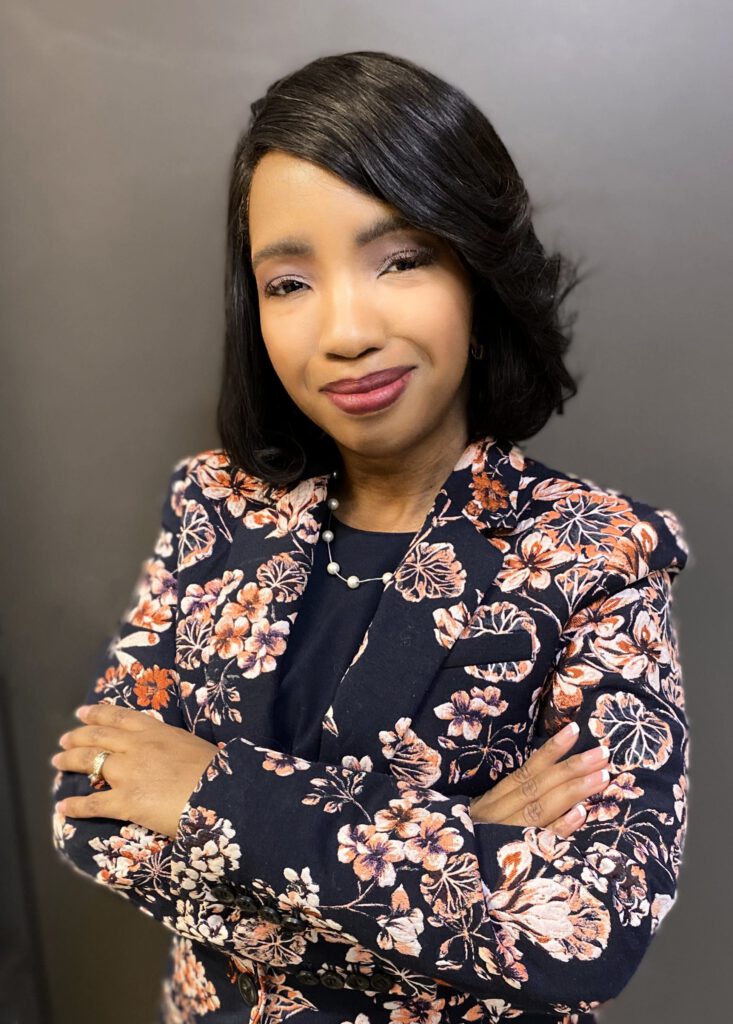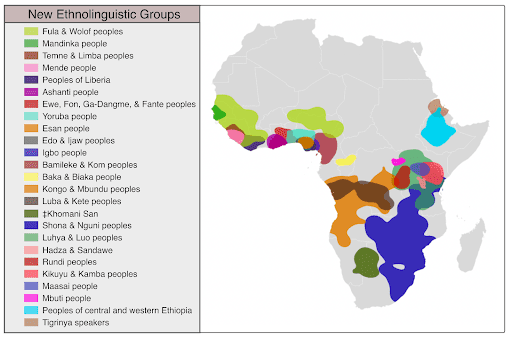Jamila studied the map, smiling, giggling a bit with wonder each time she uncovered something new.
“Oh wow, just wow, I didn’t know any of that,” she said.
The map traced out a geographic region in Africa where certain ethnolinguistic groups, or people who share a common language and culture, live today. The lines carved out a part within what is now Angola and the Democratic Republic of Congo, delineating where people who are Kongo & Mbundu live. Within the region, there are other groups like the Kete, Imbala, and the Tetala.
“I’ve never heard of any of these groups,” Jamila said. “I have so much to learn now that I know this is part of me.”

Ancestry Composition Update
Steven Micheletti, a 23andMe population geneticist, walked Jamila through this update of her 23andMe’s Ancestry Composition report. Steven explained that of the more than 12 million people stolen from Africa and taken to the Americas in the slave trade, almost half of them came from this region of West Central Africa. The update includes a total of 25 new ethnolinguistic groups in Africa. Jamila saw where in Africa she matched with others from this ethnolinguistic group with whom she shared a common ancestor up to a few hundred years ago.
But Jamila, a Seattle realtor, small business owner, and mother of eight, was seeing much more than just a map. Instead, Jamila saw a direct connection to a piece of her and her family’s history.
“This is going to mean a lot for people like me who want to know more,” she said.
A Richer History
February is Black History Month in the United States. But history for Black people here didn’t begin with slavery, Jamila said.
“Our history didn’t begin 400 years ago,” she said, referring to when the first Africans were enslaved and brought to the Americas.
For many Black Americans, the history of slavery erected a brick wall in their efforts to reach back and learn more about their ancestry. For many people like Jamila, simply saying that you have African ancestry isn’t enough. Africa itself is rich with cultures, ethnic groups, and languages; she wanted to know to what culture and group she connected.
“So I just kept asking questions,” Jamila said.
About three years ago, after using 23andMe, Jamila learned that she was primarily West African. Of her West African ancestry, about 35 percent was from Nigeria. But even Nigeria is a massive multi-ethnic place filled with different groups and cultures.
On a Quest to Learn More
Jamila wanted to know more.
“Where in Nigeria?” she asked.
Soon after testing, she connected with a distant Nigerian cousin. She learned that she was from a village in the Nigerian state of Anambra and was Ibo. Then, in Seattle, where she lives, Jamila began to participate in the Igbo Union group, made up of Ibo people now living in the United States. During one of the group’s meetings, Jamila met a woman from the same village as her cousin. Jamila and her new friend eventually traveled together to Anambra in August of 2019 and visited the village. She felt an immediate affinity with the people there.
“It was emotional and really fun,” she said. “It was life-changing.”
But she also knew there was more. Fast-forward to this year and Jamila learned through this latest 23andMe update that she is connected to ethnolinguistic groups in what is now Angola and the Democratic Republic of Congo.
“I can never be 100 percent Ibo, or (one of these other groups),” she said. “I didn’t grow up in their culture, but it’s in my blood. It’s in me.”
She plans to learn more about these cultures and incorporate some of what she learns into her life and her children’s lives.
“It’s important that they know who they are and where they came from and that the story, our story, didn’t start 400 years ago… there’s more to it than that.”
